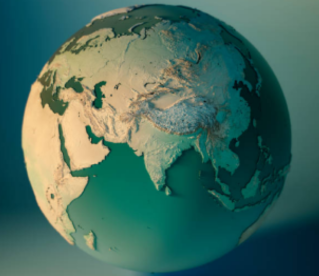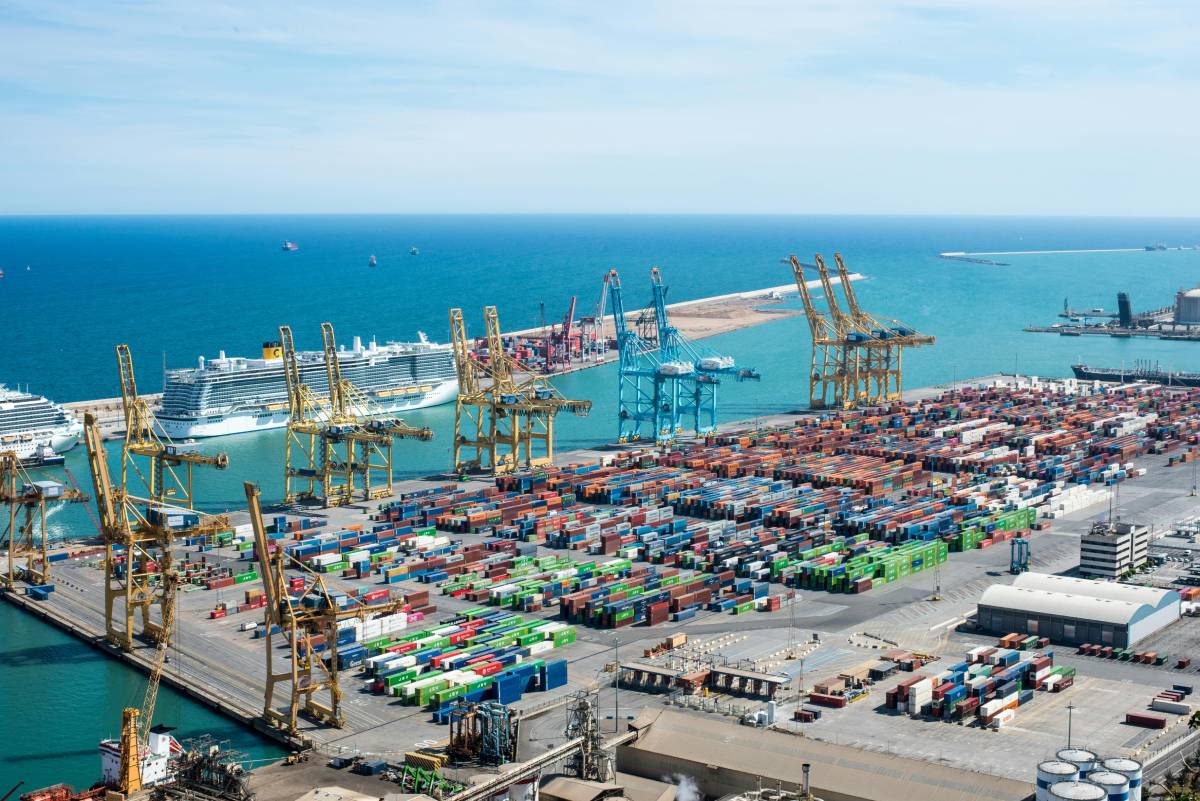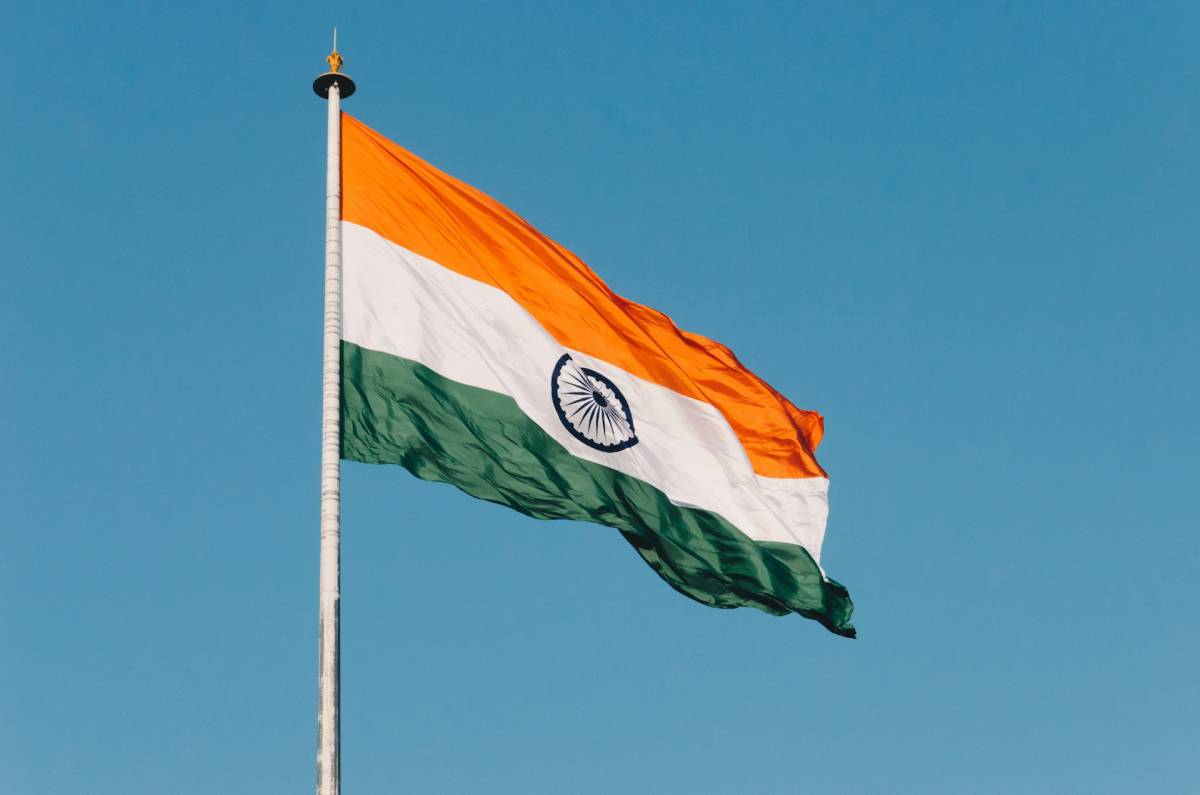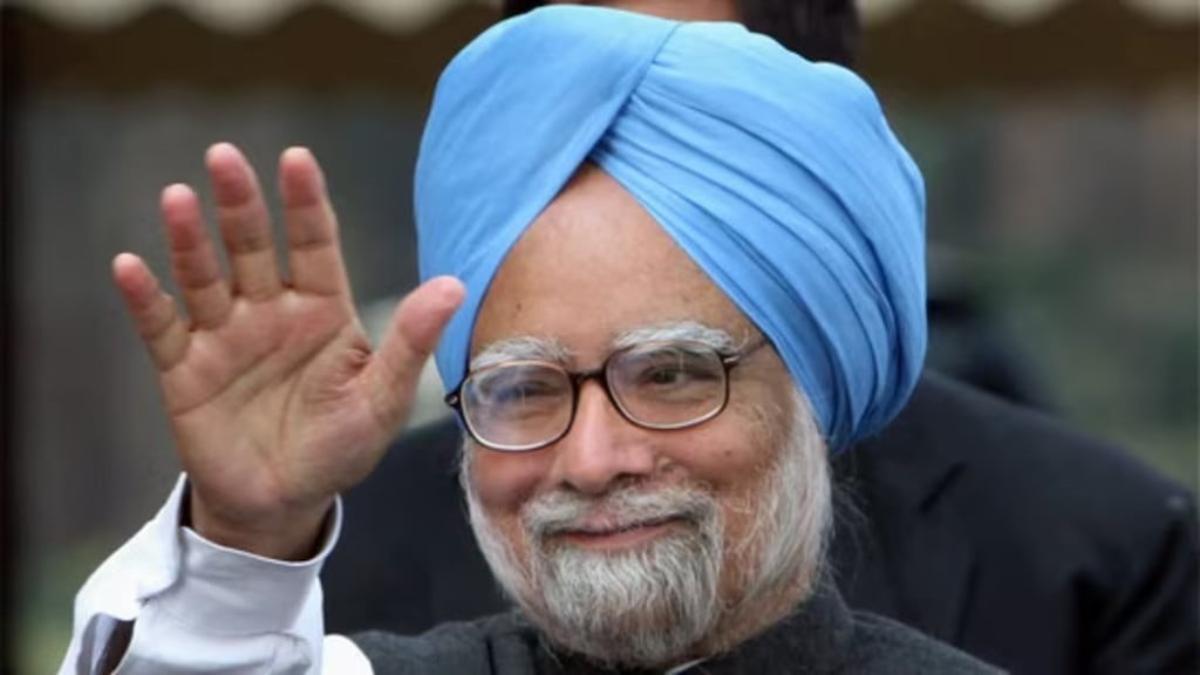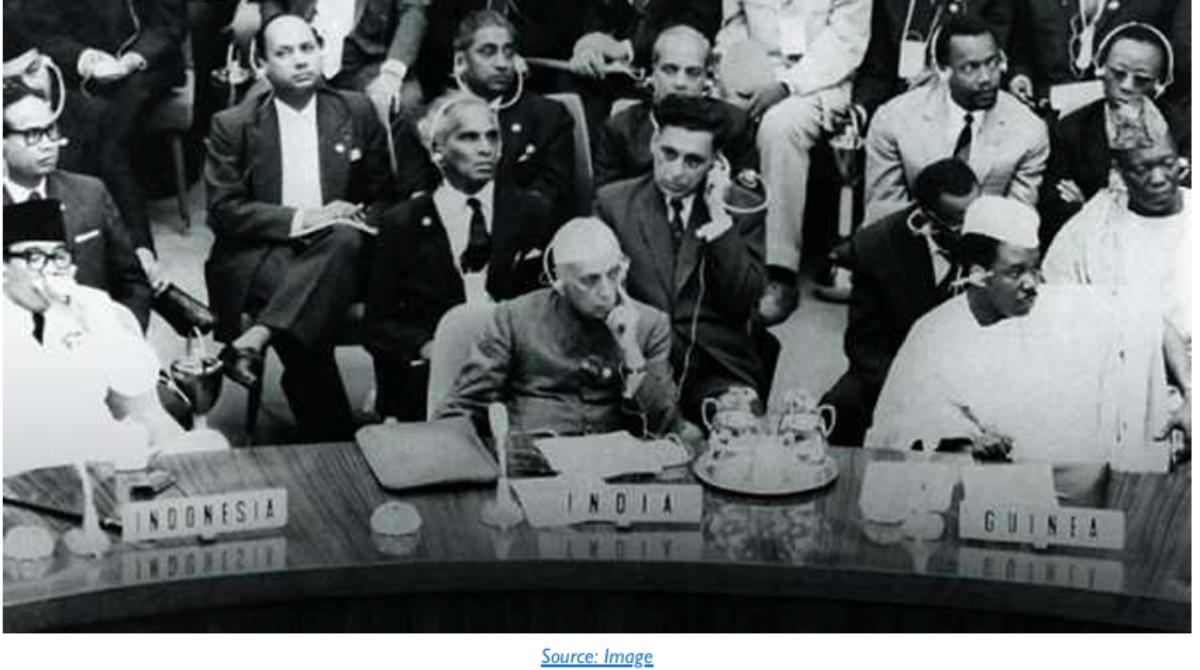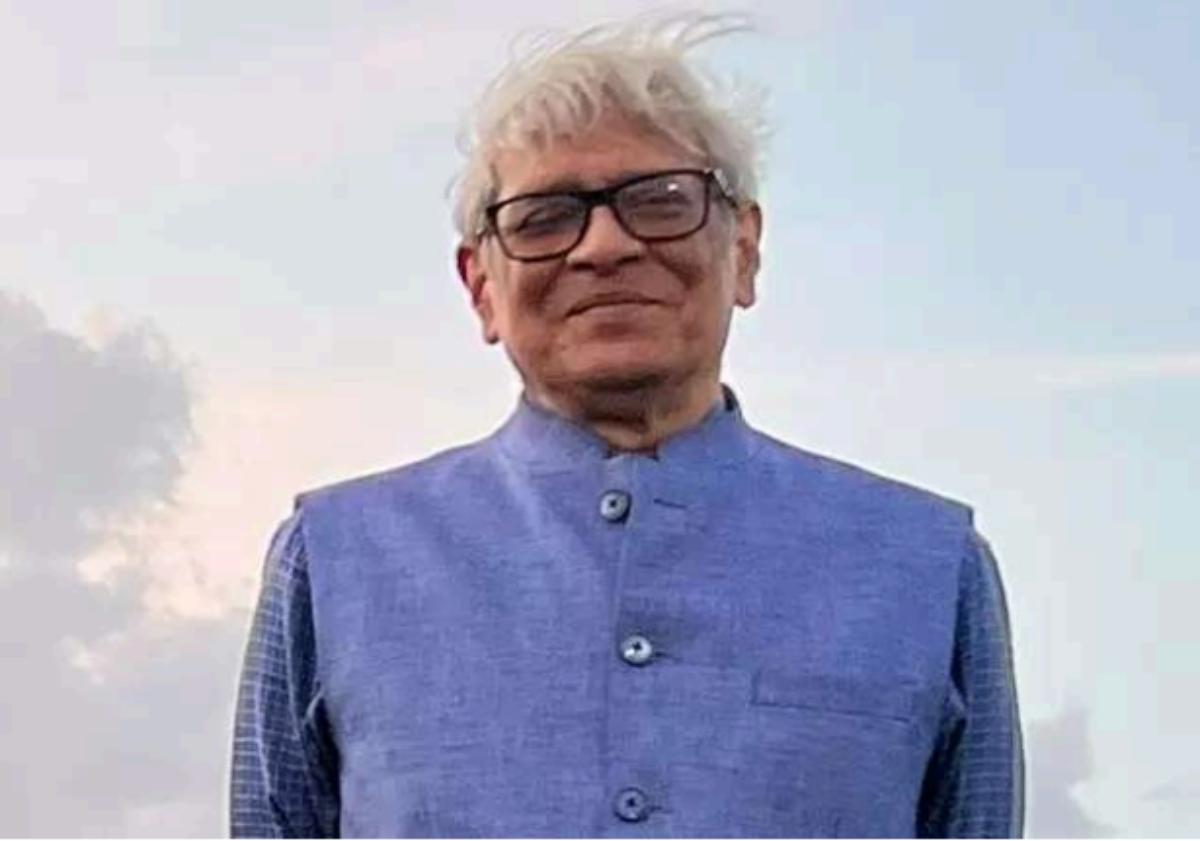Introduction
In the May 2024 issue of Policy Watch, we had presented a geostrategic perspective of India-China relations. The reasons for focussing exclusively on China were many but here we may refer to just one: the China factor impacts on India’s relationship with other neighbours. Then in the November issue, we presented Part II dealing with India’s relations with Afghanistan, Pakistan, Maldives and Bangladesh. And in this concluding piece, we cover our four remaining neighbours: Nepal and Bhutan with which India shares physical borders, and Sri Lanka and Myanmar with which we share maritime boundary.
But before we proceed to country-specific details, it may be worthwhile to note the observation of Meera Srinivasan, Elizabeth Neuffer Fellow and senior assistant editor with The Hindu:
“While Mr. Modi has called for “deeper people-to-people ties and connectivity in the region”, people in neighbouring countries evaluate India’s engagement based on many factors, not just financial assistance driven mostly by geopolitical insecurity. While nearly all neighbours value their friendship with India, they have not signed up for an uncritical embrace, as was seen after PM Modi’s pre-poll remarks on Katchatheevu. The Sri Lankan government did not object to his claim, but the media and civil society hit out at the statement, with one editorial noting “Lanka desires to be left to its own devices away from India’s internal politics.”[1]
Sri Lanka
The opening para of a slightly dated version (July 1, 2021) on India-Sri Lanka Bilateral Relations by High Commission of India, Colombo, Sri Lanka, had informed us that
“India and Sri Lanka have a legacy of intellectual, cultural, religious and linguistic interaction and the relationship between two countries is more than 2500 years old. Trade and investment have grown and there is cooperation in the fields of development, education, culture and defence. Both countries share a broad understanding on major issues of international interest. In recent years, significant progress in implementation of developmental assistance projects for Internally Displaced Persons (IDPs) and disadvantaged sections of the population in Sri Lanka has helped further cement the bonds of friendship.”
Interestingly, the updated version of November 2024 makes no mention of IDPs, Instead, it says that “India is Sri Lanka’s closest neighbor and… Sri Lanka has a central place in India’s ‘Neighbourhood First’ policy and Security and growth for all in the region (S.A.G.A.R) vision”[2]. The IDP reference has been substituted by “developmental projects focusing on Indian Origin Tamils” in a much later section on Development Cooperation.
The longest section is devoted to Political Exchanges which provides, over multiple paragraphs, information of visits of dignitaries to each other’s country. Later, seven other sections are highlighted which we may consider as manifestations of India-Sri Lanka bilateral relations: Trade and Commerce, Connectivity and Tourism, Development Cooperation, Defence and Security Cooperation, Cultural Relations, Capacity Building, and Indian Community. We will however focus on the following aspects, which include contentious issues generally not addressed in diplomatic public domain.
Trade and Commerce: India has traditionally been among Sri Lanka’s largest trade partners and Sri Lanka remains among the largest trade partners of India in the SAARC. The India-Sri Lanka Free Trade Agreement (ISFTA) came into force in 2000, contributing to the expansion of trade between the two countries. Trade between India and Sri Lanka reached USD 5.5 billion in FY 2023-24 with India’s exports amounted to USD 4.1 billion while Sri Lanka’s exports reached USD 1.4 billion. Bilateral trade was also supported by various Lines of Credit and a Credit facility for procurement of essential items.
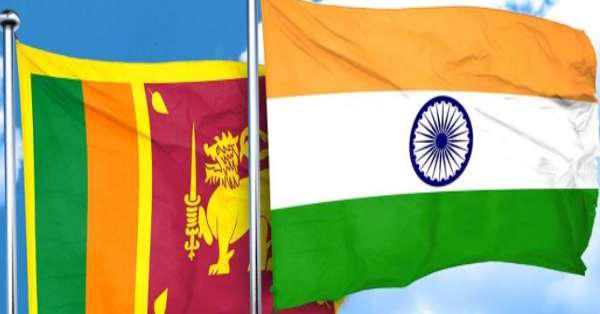
Earlier, to further broaden the scope of FTA and to strengthen the Rules of Origin, an Economic and Technology Cooperation Agreement (ETCA) covering both goods and services was proposed. The negotiations resumed after 5 years pursuant to the visit of former President Ranil Wickremesinghe in July 2023, wherein it was decided to undertake discussions on ETCA. 14 rounds of negotiations had been conducted so far with the latest round of discussion held in July 2024 in Colombo.
However, during the recent three-day visit of Sri Lankan President Anura Kumara Dissanayake to India (December 15-17), no discussions or agreements were made regarding the proposed Economic and Technological Cooperation Agreement (ETCA). While the Indian press has been silent on this issue, it was left to the Sri Lankan Government to confirm that no discussions or agreements were made regarding the proposed ETCA with India during President Anura Kumara Dissanayake’s recent state visit. Foreign Affairs, Foreign Employment, and Tourism Minister Vijitha Herath made this clarification at a special media briefing on 20th December.[3]
This is not surprising considering Dissanayake had severely criticized ETCA in the past. The Frontline Socialist Party (FSP), a breakaway faction of the Janatha Vimukthi Peramuna, which forms the core of the ruling National People’s Power coalition had argued that ETCA’s provisions for liberalizing trade in services would open Sri Lanka’s job market to an influx of Indian professionals, potentially displacing local workers. Given India’s large labour force, particularly in professions like medicine, where many local doctors remain unemployed, Sri Lanka’s ability to protect its skilled workforce could come under pressure. The FSP had warned that this would not only affect highly trained professionals but also small-scale workers in industries like transportation and street vending, as cheaper labour from India could overwhelm the local job market.[4]
In addition to being Sri Lanka’s largest trade partner, India is also one of the largest contributors to Foreign Direct Investment (FDI) in Sri Lanka, with a cumulative figure of approximately USD 2.2 billion till 2023. The main investments from India are in the areas of energy, hospitality, real estate, manufacturing, telecommunication, banking and financial services. Going forward, the priority areas would be to expedite important projects in crucial sectors such as energy, ports & shipping, renewable energy, defence supplies, etc.
Connectivity and Tourism: The economic partnership is being supported by various connectivity initiatives such as resumption of air link between Chennai and Jaffna since December 2022 and commencement of ferry services between Nagapattinam (Tamil Nadu) and Kankesanthurai (KKS), Sri Lanka since October 2023. In order to develop KKS port, Government of India has extended a grant of USD 61.5 million to Government of Sri Lanka. In parallel, discussions are ongoing to start ferry services between Rameswaram (TN) and Talaimannar which would require upgradation of infrastructure at respective ports. Another notable connectivity project is the Economic Land Corridor, for developing land access to Trincomalee and Colombo. Other elements of connectivity are in the power and energy domain. Discussions are also ongoing on the proposed multi-product pipeline connecting India and Sri Lanka and the power grid interconnection. In the financial domain, UPI services were commercially launched by Prime Minister Shri Narendra Modi and former President Ranil Wickremesinghe via video conferencing in February 2024.
Tourism is another important component with India being the leading tourist source market in 2023 with around 3 lakh arrivals (~20 % of ~1.48 million total arrivals) and in 2024 (till October 2024) with around 3.2 lakh arrivals (~19.3 % of 1.65 million total arrivals).
Development Cooperation: India’s development cooperation with Sri Lanka stands out as one of the most important pillars of our bilateral relationship, with an overall assistance amounting to USD 5 billion in the form of concessional loans/swap agreements and USD 600 million as grants. These development projects extend to all 25 districts of Sri Lanka and cut across several sectors including infrastructure, housing, health, livelihood and rehabilitation, education, industrial development, etc. India’s biggest grant assistance project is the construction of 60,000 houses under the four phases of Indian Housing Project at a total cost of more than INR 1800 crore. India is also extending grant assistance of INR 300 crore towards implementing Sri Lanka Unique Digital Identity project. Further, close 20 projects are ongoing under High Impact Community Development programme.
Besides the developmental assistance, India has provided multi-faceted assistance to Sri Lanka, close to USD 4 billion, during the economic crisis in 2022. These include USD 500 Line of Credit (LoC) for supply of petroleum products; Currency swap of USD 400 million extended to the Central Bank of Sri Lanka (CBSL) by the Reserve Bank of India (RBI); USD 1 billion credit facility for supply of food items, medicines, fuel and industrial raw materials; Deferment of payment of liabilities under the Asian Clearing Union (ACU) mechanism by CBSL to RBI in 2022 (total deferment of approx. USD 2 billion); and USD 55 million LoC for procurement of Urea Fertilizer. This was augmented by humanitarian assistance through donation of drugs, medicines, essential food items, kerosene, etc. India also played the role of first responder during the Covid – 19 pandemic by supply of vaccines and essential medicines from India, including donation of 500,000 doses of COVISHIELD vaccines in January 2021 and grant of 100,000 Rapid Antigen Test (RAT) kits in February 2022.
Defence and Security Cooperation: India and Sri Lanka enjoy strong defence relationship pillared on close linkages between our militaries guided by commonality of security concerns and challenges. Defence cooperation with Sri Lanka encompasses training, joint exercises, supply of military equipment, high level bilateral visits, bilateral goodwill visits by Navy and Coast Guard ships. Annual Defence Dialogue is held between the Defence Secretaries every year to review and add momentum to bilateral defence cooperation.
India continues to be the largest provider of foreign training assistance to Sri Lankan Armed Forces. Besides the bilateral SLINEX (Naval Exercise) and MITRA SHAKTI (Army Exercise) held every year alternatively in India & Sri Lanka, Sri Lanka participates in MILAN the multilateral naval exercise hosted by the Indian Navy.
In terms of capacity building, the latest has been the installation of Maritime Rescue Coordination Centre (MRCC) for Sri Lanka Navy under GOI grant which was commissioned on 20 June 24 during the official visit of EAM. IN Dornier Aircraft has been operated by Sri Lanka Air Force at Trincomalee since Aug 2022 and has successfully undertaken extensive flying for maritime surveillance.
High level visits/ Service to Service staff talks between Indian and Sri Lankan Armed Force are conducted periodically. Since 2018, Reciprocal cultural visits between Indian and Sri Lankan Armed forces have been a regular feature.
In addition, India has been ‘first responder’ for Sri Lanka with Indian Navy and Indian Coast Guard having intervened in Sri Lankan waters to avert large scale environmental damage such as MV XPress Pearl in May 2021 and MT New Diamond in September 2020. Security cooperation on counter terrorism and other related areas are also an important aspect of our bilateral relationship. The Colombo Security Conclave has emerged as a key platform in recent times to address such issues at a regional level.
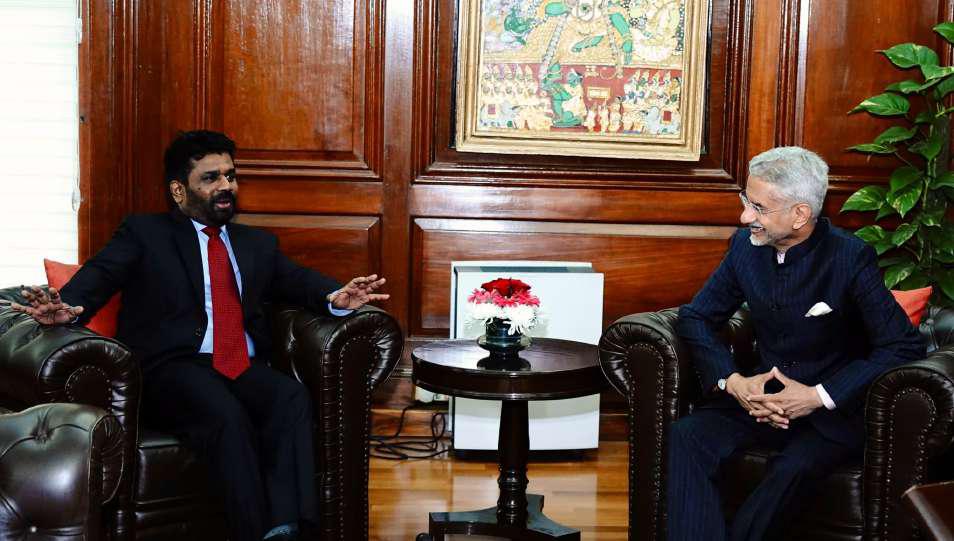
Indian Community: The People of Indian Origin (PIOs) comprise Sindhis, Borahs, Gujaratis, Memons, Parsis, Malayalis and Telugu speaking persons who have settled down in Sri Lanka (most of them after partition) and are engaged in various business ventures. Though their numbers (10,000 approximately) are much lesser as compared to Indian Origin Tamil (IOT), they are economically prosperous and are well placed. IOTs are mostly employed in either tea or rubber plantations, in Central, Uva and Sabaragamuwa Provinces. A fair number of IOTs living in Colombo are engaged in business. The population of IOTs, according to unofficial estimates, is about 1.6 million.
The China factor : In 2004, the U.S. consulting firm Booz Allen Hamilton came up with the “string of pearls” hypothesis, which posits that China will try to expand its naval presence by building civilian maritime infrastructure along the Indian Ocean periphery. China has done much better than that. Using its economic might, it has financed lesser economies to start major development projects often leading them in a debt trap, forcing them to let China take control of strategic assets. In Pakistan, the Gwadar port is a naval base built as part of the China-Pakistan Economic Corridor (CPEC) project; in Bangladesh, China has a naval base at Chittagong Port; in Myanmar it has increased its economic and military ties, and in Sri Lanka it has taken over the Hambantota port on a 99-year lease to strengthen its naval operations in the Indian Ocean. China’s “string of pearls” is a threat to India’s national security because it would encircle India and threaten its trade, power projection, and potentially territorial integrity.
A recent article in The Economic Times (3 May 2024)[5] says that China is Sri Lanka’s largest bilateral lender owning 52 per cent of the USD 40 billion external debt when Sri Lanka announced its first sovereign default in 2022. In late March 2024, China and Sri Lanka signed nine agreements as Sri Lankan PM Dinesh Gunawardena met Chinese President Xi Jinping and Premier Li Qiang in Beijing amid Colombo’s efforts to restructure its loans to revive its bankrupt economy.
A joint statement by the two countries as Gunawardena wrapped up his official weeklong visit to China, said that China will play a “positive role” in easing the financial difficulties of cash-strapped Sri Lanka and its bid to achieve “debt sustainability” while Colombo will accelerate the formulation of a Belt and Road Initiative (BRI) cooperation plan to advance Beijing’s projects in the island nation. As a follow-up, there’d be direct private investments from China and greater Chinese participation in sectors like agriculture, renewable energy, IT and education.
Earlier in November 2023, Sri Lanka paved the way for a $4.5 billion investment by China in Hambantota. The town, which also houses a port that was leased to a Chinese state-owned shipping company in 2017, is at the heart of India’s concerns about growing Chinese influence in New Delhi’s strategic backyard[6].
Nikkei Asia labelled this as Sri Lanka “falling into an alleged Chinese ‘debt trap,’ enticed into accepting unsustainable loans for infrastructure projects and allowing Beijing to gain strategic or military influence by seizing assets in times of financial distress.”[7]
But India is taking a leaf out of China’s playbook and is investing in ports in foreign countries. As far as Sri Lanka is concerned, after burning its hands at the hands of Chinese investment, luring it into a debt trap, the Sri Lankan government has decided to renovate its Kankesanturai Port in the Northern Province with 100% Indian funding.
In a strategic coup, India, in partnership with a Russian firm, secured management rights for the Mattala Rajapaksa International Airport (MRIA) in Hambantota, Sri Lanka. The airport, developed through Chinese loans, contributed to a financial crisis in the island country, and in return, Sri Lanka got only the “world’s emptiest airport” with minimal flight activity. “Management control over MRIA gives India significant leverage over the Hambantota port and makes it implausible for the Chinese Navy to develop a substantial facility at sight without controlling the airport.”[8]
Defence and Security Cooperation: Therefore from India’s perspective, her security concern is perhaps the most important factor mediating India-Sri Lanka relations. In his joint statement with Sri Lankan President Anura Kumara Dissanayake, PM Modi said that both nations believe that Colombo Security Conclave is an important platform for regional peace, security and development. He said, “We completely agree that our security interests are interlinked. We have decided to conclude the defence cooperation agreement soon. Cooperation on hydrography has also been agreed upon. We believe that the Colombo Security Conclave is an important platform for regional peace, security and development. Under this, cooperation will be enhanced on topics like maritime security, counter-terrorism, cyber-security, fight against smuggling and organised crime, humanitarian assistance and disaster relief.”[9]
Anirban Bhaumik further reports that India will provide military hardware to Sri Lanka to augment the neighbouring island nation’s defence capabilities, Prime Minister Narendra Modi and President Anura Kumar Dissanayake announced on Monday, apart from agreeing to expedite a bilateral agreement on security cooperation.
“We are in full agreement that our security interests are interconnected. We have decided to quickly finalise the security cooperation agreement. We have also agreed to cooperate on hydrography,” Modi said after a meeting with the Sri Lankan president in New Delhi. Dissanayake, on the other hand, reassured Modi that Sri Lanka never allow its territory to be used for “any activity that could be adversarial to the security interests of India or might pose a threat to the stability of the region”.
The promise of the Sri Lankan president, known to be a leftist nationalist, about being sensitive to the security interests of India was significant, given Beijing’s bid to pull the Indian Ocean nations into its orbit of geopolitical influence and the Chinese People’s Liberation Army Navy’s increasing forays in the region.
Modi and Dissanayake agreed to intensify defence collaboration through joint exercises, joint maritime surveillance, and defence dialogue and exchanges.[10]
The politics of maintaining bilateral relations: There were three main contenders in the run-up to the Presidential elections in Sri Lanka on September 21 this year: the incumbent President Ranil Wickremesinghe, opposition leader Sajith Premadasa, and leftist challenger Anura Kumara Dissanayake – each offering a distinct vision for Sri Lanka’s recovery from its most profound crisis since independence. The 2022 economic collapse had left the country bankrupt, triggering mass protests, the downfall of the Rajapaksa dynasty, and widespread public disillusionment. The vote on Sep 21, in many ways, was like a referendum on the leadership that followed and the future path of the country.
For Sri Lanka, foreign policy has always been shaped by the island’s delicate balancing act between India and China. Before the voting took place, this election was seen to tip the scales significantly. India, which provided crucial financial aid during the 2022 crisis, was keen to see a friendly government in Colombo. The stakes for India were particularly high, given China’s deep inroads into Sri Lanka through infrastructure projects like the Hambantota port.
While Wickremesinghe was seen to be the person who had stabilised the economy, his harsh measures had caused widespread frustration, more so because of rising inequality. However, Wickremesinghe had maintained a pragmatic foreign policy, cultivating relations with both India and China to navigate Sri Lanka’s economic recovery. His re-election would have meant continuity in this balancing act, though it would not have alleviated India’s concerns about Chinese influence.
Sajith Premadasa, viewed as more pro-India, had been critical of China’s debt-trap diplomacy and was expected to rebalance Sri Lanka’s foreign policy more in favour of New Delhi.[11]
Dissanayake, on the other hand, was a Marxist, son of a daily wager. In 2000, Dissanayake became a member of Parliament by contesting the Presidential elections through the nationalist list. While JVP supported President Kumaratunga’s administration, his party later aligned with Sinhala nationalists in 2002 to oppose peace negotiations with the Tamil rebel group LTTE, fighting an armed uprising against the Sinhala-dominated government in Colombo. In equal measure, Dissanayake’s JVP had denounced the Tamil-origin estate workers from India as an “instrument of Indian expansionism”. Further, Dissanayake’s JVP had opposed any devolution of power to the Tamils. His party had opposed the Indo-Lanka Accord of 1987 signed by then India’s Prime Minister Rajiv Gandhi. The party had also opposed the 13th amendment to Sri Lanka Constitution that created Provincial Councils to grant greater control over land revenue and police in the country’s Tamil-dominated North-East. Finally, his party has also opposed the Comprehensive Economic Partnership Agreement (CEPA) on trade that would promote greater trade and investment between both countries. Almost as an extension, Dissanayake had taken a more cautious stance toward India’s growing influence, especially regarding business deals such as those an Indian corporate group. His calls to reassess foreign economic deals suggested a potential strain in India-Sri Lanka relations should he come to power.
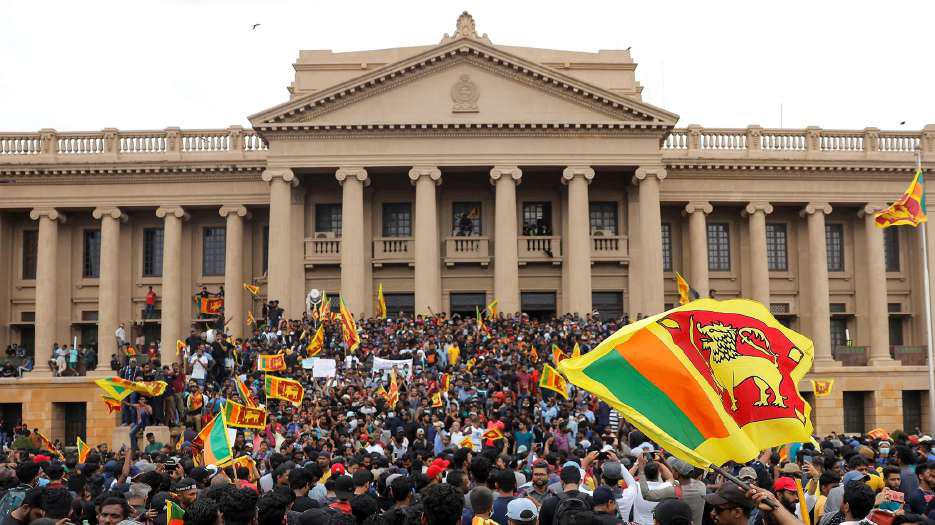
If we have learnt anything (or, still to learn?) from the recent developments in Bangladesh impacting on bilateral relationship, it is that maintaining relations with ruling party dispensation to the exclusion of the concerns and aspirations of the people can become highly counterproductive – washing out most, if not all, the benefits accruing out of extending significant support provided over many years through grants, loans, line of credit, infrastructure and humanitarian support. It’s actually not too hard: paying attention to, and not dismissing, critical reportage from independent media and rumblings from opposition, whether strong or emaciated, can actually serve long-term interests in maintaining bilateral relations.
Though New Delhi’s support to Sri Lanka during the financial crisis in the island nation helped it win back the clout it had lost to Beijing in the neighbouring Indian Ocean country, India was worried about the course of the bilateral relations after Dissanayake succeeded Ranil Wickremesinghe after the presidential elections in September. So, it was just as well that in spite of India having fairly good relations with the incumbent President Ranil Wickremesinghe, India invited opposition leader and leftist challenger and also staunch India critic Anura Kumara Dissanayake to visit India before the presidential elections in Sri Lanka. By all accounts this move on India’s part paid off well when Dissanayake chose to visit India on his first official visit to a foreign country.
Outcomes of Dissanayake’s visit: A simple and straightforward way of knowing the outcome is to look at the joint statements made and MOUs that were signed. Equally critical would be issues and aspects that were deemed important and part of discourse but were played down or simply avoided.
First, Sri Lankan President Anura Kumara Dissanayake on Monday thanked India for economic support during the island nation’s financial meltdown and crucial assistance in restructuring bilateral debt. “We faced an unprecedented economic crisis some 2 years ago and India supported us immensely to come out of that quagmire. It has also helped us immensely after that, especially in the debt-free structuring process,” said Dissanayake, noting that his country secures a very significant place in India’s foreign policy.[12]
Second, issuing a joint press statement, Prime Minister Narendra Modi said that India’s bilateral projects in Sri Lanka is “always” based on Colombo’s “development priorities”. “India has so far provided 5 billion dollars in line of credit and grant assistance to Sri Lanka. We have cooperation in all 25 districts of Sri Lanka,” PM Modi said[13]. In continuation of this position, Foreign Secretary Vikram was to later tell media persons, “He (Modi) assured President Dissanayake that India’s approach would be investment-based and grant-oriented to reduce the debt burden on Sri Lanka, and to assist them in generating economic opportunities that are long-term and sustainable”.
Third, the Sri Lankan president also assured that his country will not allow its territory to be used in “any manner” that is detrimental to India’s interest. “PM Modi assured us full support and he also assured us that he will always protect the territorial integrity and sovereignty of Sri Lanka,” Dissanayake said.[14]
Fourth related to Tamil people of Sri Lanka. “We hope that the Sri Lankan government shall fulfill the aspirations of the Tamil people (of Sri Lanka) and shall fulfil its commitment towards fully implementing the Constitution of Sri Lanka and conducting the provincial council elections,” Modi said as he and Dissanayake addressed media-persons after the meeting in New Delhi. He, however, avoided specifically asking Colombo to implement the Sri Lankan constitution’s 13th amendment, which had its roots in the agreement that New Delhi had in July 1987 signed with Colombo to protect the interests of the minority Tamils of the Indian Ocean nation. Dissanayake’s party Janatha Vimukhti Peramuna, known for its leftist nationalist ideology, opposed the agreement between Sri Lanka and India and had burnt its copies in the past.
The joint statement issued after the meeting between the two leaders also avoided any specific reference to the implementation of the Sri Lankan constitution’s 13th amendment for devolution of power.
Dissanayake told Modi about the huge mandate his National People’s Power coalition received in the presidential and parliamentary elections from all the regions and communities of Sri Lanka.
But it is also good to first look at the response of the Sri Lanka government and associated press. So, as a starting point we refer responses emanating from Sri Lanka.
The first one is titled “Sri Lanka Clarifies Position on ETCA and Strengthened Ties with India During President’s State Visit”[15] and goes on to say that the Sri Lankan Government has confirmed that no discussions or agreements were made regarding the proposed Economic and Technological Cooperation Agreement (ETCA) with India during President Anura Kumara Dissanayake’s recent state visit. Foreign Affairs, Foreign Employment, and Tourism Minister Vijitha Herath made this clarification at a special media briefing held yesterday (20) at the Department of Government Information.
It goes on to say that Minister Herath emphasized that the state visit was a significant success, further solidifying bilateral relations between the two countries. And then it to say that “the key outcomes of the visit include strengthened cooperation in economic, cultural, digital, technological, environmental, and other sectors.”
| Key Agreements and Initiatives:
Two Memorandums of Understanding (MOUs) were signed: Public Service Training: A two-week training program in India for 1,500 Sri Lankan state officials over the next five years. Double Taxation Removal: A measure to eliminate double taxation for Sri Lankan businesses in India and vice versa, fostering economic benefits for the business communities of both nations. Discussions on Fisheries Issues The ongoing issues between Sri Lankan fishermen and South Indian fishing communities were also addressed. President Dissanayake highlighted concerns over bottom trawling by South Indian fishermen in Sri Lankan waters and arrests for trespassing. Both governments agreed to expedite discussions to find a permanent solution. Infrastructure and Economic Development Projects: India pledged support for various development projects, including: Housing Projects: Continuation of Indian-funded housing initiatives in Sri Lanka. Mahawa–Omanthai Railway Line Renovation: Conversion of the Indian loan into a grant to complete the railway renovation, including a traffic signal system and operationalization of two trains between Anuradhapura and Jaffna. Karainagar Boat Complex: Grant funding for the construction of a boat complex to benefit the fishing industry in the North and nationwide. Energy Cooperation: Sri Lanka and India reaffirmed their commitment to several energy projects: Sampur Solar Power Project: Continued collaboration under an existing agreement. Renewable Energy Initiatives: Discussions on joint LNG and wind power projects, with plans to export excess electricity through India under BIMSTEC cooperation. Multi-Product Oil Pipeline: A proposed joint venture involving Sri Lanka, India, and the UAE to construct a pipeline to supply affordable energy. Maritime and Security Assurances: President Dissanayake proposed initiating talks to finalize Sri Lanka’s Exclusive Economic Zone (EEZ) demarcation, a proposal India agreed to discuss. The President also assured India that Sri Lankan territory, including land and sea, would not be used by any foreign power to threaten regional security. Commitment to Responsible Agreements: Minister Herath stressed that the Sri Lankan government remains committed to agreements that prioritize the country’s well-being. “The government under President Anura Kumara Dissanayake will not agree to anything that is detrimental to the country in any way,” he affirmed. This state visit marked a pivotal step in fostering stronger ties between India and Sri Lanka, with mutual agreements and discussions aimed at long-term benefits for both nations. |
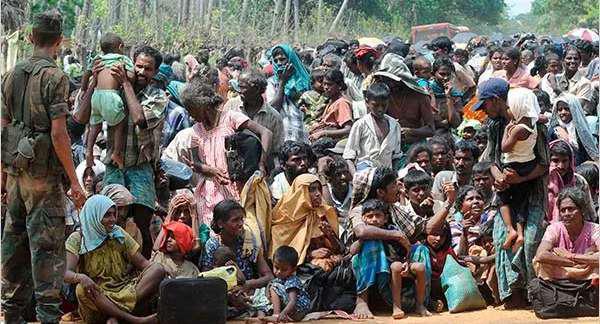
Another report published the same day by Lanka News Web (LNW) titled “Sri Lanka Denies Agreement on Indo-Lanka Oil Pipeline”[16] states that
“Sri Lanka has firmly rejected media claims suggesting an agreement was reached to construct an Indian oil pipeline during recent bilateral talks. Foreign Minister Vijitha Herath clarified that no such deal was finalized during President Anura Kumara Dissanayake’s visit to India, dismissing reports as inaccurate.
The controversy stems from Indian Prime Minister Narendra Modi’s statement on November 16, where he outlined plans for enhanced energy collaboration between the two nations, including connecting power grids and laying a petroleum pipeline. Modi’s remarks followed his meeting with President Dissanayake in New Delhi, marking the Sri Lankan leader’s first official visit since assuming office after a decisive election victory in September.
While India’s state-run Petronet LNG has agreed to supply liquefied natural gas (LNG) to Colombo’s power plants via its Kochi terminal for five years, discussions on broader energy projects remain preliminary. According to Minister Herath, a proposal involving India, Sri Lanka, and the United Arab Emirates (UAE) to construct a multi-product energy pipeline has been introduced but is still under review, with no formal agreement in place.
Herath emphasized the importance of continuing dialogue on energy collaboration but dismissed allegations of a finalized deal for Indian oil pipelines in Sri Lanka as false. He made these clarifications during a special briefing held on November 20 at the Department of Government Information.
The official joint statement issued by India’s Ministry of External Affairs highlighted mutual interest in strengthening energy cooperation. Both leaders agreed on the need for reliable and affordable energy to ensure energy security and meet public demands.
Specific areas of focus include implementing the Sampur solar power project and exploring its expansion based on Sri Lanka’s needs. Other proposals under discussion involve LNG supply, offshore wind power development in the Palk Strait, and a potential high-capacity power grid interconnection.
The Indo-Lanka-UAE pipeline proposal aims to facilitate affordable and sustainable energy supply, addressing regional energy challenges. While the project could hold significant strategic and economic benefits, its feasibility and timeline remain subjects of ongoing deliberations.
While India and Sri Lanka have pledged to deepen energy ties, claims of a concrete oil pipeline agreement are unsubstantiated. The dialogue reflects both nations’ commitment to exploring innovative energy solutions while prioritizing environmental conservation and regional energy security.”
Two disputes: The first has to do with cobalt exploration. Sri Lanka opposes India’s bid to explore cobalt from an undersea mountain in Indian Ocean. A fresh maritime dispute between New Delhi and Colombo seems to be brewing with Sri Lanka objecting to India’s plea to the International Seabed Authority (ISA) based at Kingston in Jamaica for rights to explore cobalt-rich ferromanganese crusts in Afanasy Nikitin Seamount in the Indian Ocean.
The Earth System Science Organization (ESSO), an autonomous institute of the Ministry of Earth Sciences of the Government of India, submitted an application to the secretary general of the ISA on January 18, 2024, seeking approval for a 15-year plan of work for the exploration of cobalt-rich ferromanganese at Afanasy Nikitin Seamount in the central Indian Ocean.
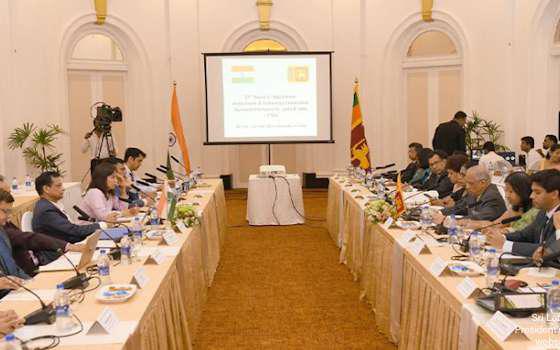
New Delhi moved the ISA seeking rights to explore the cobalt-rich crusts in Afanasy Nikitin Seamount in the wake of the increasing forays of the Chinese People’s Liberation Army’s research vessels in the Indian Ocean region.
The ESSO deposited an application fee of $500,000 to the ISA – an autonomous international organization established under the 1982 United Nations Convention on the Law of the Sea (UNCLOS) to authorize and control the exploration of mineral deposits in the international seabed.
Colombo has argued that the area where India wants to explore cobalt-rich ferromanganese crusts is entirely within the extended continental shelf claim of Sri Lanka. The island nation’s government has urged the ISA to refrain from accepting New Delhi’s plea for exploration rights in Afanasy Nikitin Seamount till the United Nations Commission on the Limits of the Continental Shelf (UN-CLCS) decides on its continental shelf claim.
Sri Lanka’s continental shelf claim also contradicts that of India’s and that is why it remains pending with the UN-CLCS since 2009. The two neighbouring nations have been negotiating to end the impasse bilaterally. They, however, could not make any headway in the past one-and-a-half decades.[17]
The second dispute is about Katchatheevu Island. Katchatheevu is an uninhabited island spanning some 285 acres in the Palk Strait that separates Tamil Nadu and northern Sri Lanka. More precisely, it is located 14.5 km south of Delft Island and about 16 km to the northeast of Rameswaram. It is barren, has no drinking water or infrastructure, except a sole Catholic structure dedicated to St. Anthony.
The dispute on the status of the island of Kachchatheevu was settled in 1974 by an agreement between both countries. Later, in 2008, then Tamil Nadu Chief Minister filed a writ petition in the Supreme Court to declare as unconstitutional the 1974 and 1976 agreements between New Delhi and Colombo on ceding of Katchatheevu, an island off the Rameswaram coast, to Sri Lanka.
When the case came up in 2013, the Union government informed the Supreme Court that the question of retrieval of Kachchatheevu from Sri Lanka did not arise as no territory belonging to India was ceded to Sri Lanka.[18]
But on March 31 this year, Prime Minister Narendra Modi posted on social media platform ‘X’ that he blamed the Congress for “callously” giving away Katchatheevu island to Sri Lanka. He cited a media report on documents received in response to a Right to Information Act application from K. Annamalai, the Bharatiya Janata Party’s (BJP) Tamil Nadu president. Soon after, External Affairs Minister S. Jaishankar held a media conference, in which he sought to elaborate on Mr. Modi’s allegation. Calling for a “solution”, he said the bilateral agreements signed by India and Sri Lanka in 1974 and 1976, when the Congress and the Dravida Munnetra Kazhagam (DMK) were in power respectively at the Centre and in Tamil Nadu, displayed indifference about Katchatheevu island, and compromised Indian fishermen’s rights in the Palk Strait separating India and Sri Lanka.[19]
Meera Srinivasan reports that while there was no official response from Sri Lankan authorities on the remarks by Prime Minister Narendra Modi and External Affairs Minister S. Jaishankar on Katchatheevu, the island nation’s media took a critical view of the development, while fishermen’s associations urged Sri Lankan authorities to take up the issue of bottom trawling more vocally with the Indian government.
She informs us that the Colombo-based English newspaper Daily Mirror, in its editorial on Tuesday, noted: “Sadly, even the seemingly unflappable Indian External Affairs Minister – Jaishankar – has dropped all pretence of statesmanship and has joined hands with his premier to rouse communal feelings in the hope of gaining a few votes in Tamil Nadu.” “Lanka desires to be left to its own devices away from India’s internal politics,” it said. Another newspaper noted, “Remarks would force Colombo to ‘seek security guarantees elsewhere”.[20]
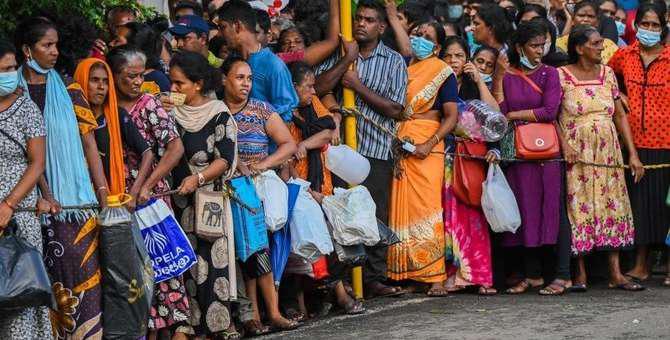
Reading the tea leaves: Writing for The Diplomat, Rathindra Kuruvita[21] says Sri Lankan President’s India visit has energized relations, but while the agreements and announcements signal opportunities for economic recovery and stronger bilateral ties, concerns remain regarding their long-term implications for Sri Lanka’s sovereignty and economic independence. Criticism has emerged domestically, most notably from the Frontline Socialist Party (FSP), a breakaway faction of the Janatha Vimukthi Peramuna, which forms the core of the ruling National People’s Power coalition. The FSP has argued that these deals could disproportionately favor India while undermining Sri Lanka’s local workforce, resources, and autonomy. These criticisms could dent the forward momentum of the Dissanayake administration, whose party had often criticised former President Ranil Wickremesinghe over its dealings with India.
In a statement, the FSP specifically raised alarm over the proposed development of Trincomalee into an Indian economic hub, which could result in the displacement of over 7,000 families. The allocation of large tracts of land to foreign projects and the prospect of resource exploration rights being handed over to Indian entities in regions like Mannar and Kuchchaveli have heightened fears that Sri Lanka’s natural wealth could be exploited at the expense of its people.
Another significant concern stems from the revival of the Economic and Technology Cooperation Agreement (ETCA), which Dissanayake had severely criticized in the past. The FSP argued that ETCA’s provisions for liberalizing trade in services would open Sri Lanka’s job market to an influx of Indian professionals, potentially displacing local workers. Given India’s large labor force, particularly in professions like medicine, where many local doctors remain unemployed, Sri Lanka’s ability to protect its skilled workforce could come under pressure. The FSP warned that this would not only affect highly trained professionals but also small-scale workers in industries like transportation, barbering, and street vending, as cheaper labor from India could overwhelm the local job market.
The energy sector, another key focus of the visit, also drew scrutiny. While India’s involvement in LNG supply, offshore wind power, and power grid interconnection could help address Sri Lanka’s immediate energy needs, critics argue that such partnerships could make Sri Lanka increasingly dependent on Indian energy infrastructure. The FSP highlighted Bangladesh’s experience with India, where energy agreements granted significant control to Indian conglomerates like the Adani Group, effectively reducing Bangladesh’s energy sovereignty. Similar fears are being echoed in Sri Lanka, particularly as energy partnerships often lack transparency regarding long-term costs and benefits.
These criticisms are further tied to broader geopolitical concerns. The FSP’s Wasantha Mudalige pointed to India’s long-term vision for regional dominance, citing the “Akhand Bharat” concept which imagines a unified South Asia under Indian influence. According to Mudalige, India’s increasing economic and strategic role in Sri Lanka could lead to an erosion of political autonomy, reducing Sri Lanka to a satellite state. The presence of such sentiments reflects deep-seated anxieties within Sri Lankan society about maintaining national sovereignty while pursuing external partnerships.
Despite these concerns, Dissanayake’s visit also reflects a pragmatic approach to rebuilding the country’s economy following the devastating collapse of 2022. India’s financial support, which included $4 billion in aid for food, fuel, and medicines, played a crucial role in stabilizing Sri Lanka’s economy during its most challenging period. The agreements reached during Dissanayake’s first presidential visit to New Delhi aim to build on that foundation by encouraging investment-led partnerships, improving connectivity, and enhancing trade. India’s plan to promote INR-LKR trade settlements could provide much-needed relief to Sri Lanka’s foreign exchange reserves, while proposed capacity-building programs, such as training 1,500 civil servants over the next five years, represent efforts to strengthen local governance structures.
Balancing the benefits of these initiatives with the risks they pose remains a challenge for Dissanayake’s government. Critics argue that Sri Lanka must approach these partnerships cautiously to ensure that they align with the interests and aspirations of its people. While collaboration with India can offer economic opportunities, transparency, equitable resource sharing, and protection of domestic industries must remain priorities. Dissanayake’s leadership will be tested in navigating these agreements in a way that fosters recovery without compromising Sri Lanka’s sovereignty or local livelihoods.
The visit to India has undoubtedly set the stage for a new chapter in bilateral relations, but its success will depend on how these agreements are implemented and whether they truly benefit Sri Lanka’s people. As the country strives to rebuild, Dissanayake’s government is likely to strike a careful balance — leveraging India’s support while safeguarding Sri Lanka’s independence, economy, and long-term stability.
And on our part, we seem to have learnt our lesson from our present messy relations with Bangladesh. While Dissenayake certainly gets many brownie points on his first official visit after becoming President by skilfully shedding his left-leaning and anti-India image, Modi’s handling of the visit the comments Modi was certainly circumspect. The way he raised the Tamil people’s issue without raising the hackles of the visiting President hasn’t been missed by any. Same with the 13th Amendment of SL’s Constitution. And most important, India’s security concerns were addressed forcefully.
Myanmar
India and Myanmar share a long land border of over 1600 kilometres and a maritime border in the Bay of Bengal. Myanmar is important to India because of the geographic, historical, cultural and economic linkages that span centuries as well as for the overall development of North-Eastern Indian states. The 1600 km long border separates the Indian states of Mizoram, Manipur, Nagaland and Arunachal Pradesh from Kachin state, Sagaing region and Chin state in Myanmar. Since Mizoram, Manipur and Nagaland have often been on the boil – with insurgents seeking refuge in Burmese soil – the border issue question is a perpetual cause of concern for the Indian government.
India’s relationship with Myanmar primarily revolves around economic and strategic cooperation and security concerns. According to Wikipedia[22], bilateral trade has crossed more than $1 billion. India is Myanmar’s 4th largest trading partner after Thailand, China and Singapore, and second largest export market.
The Indian government has worked to extend air, land and sea routes to strengthen trade links with Myanmar and establish a gas pipeline. While the involvement of India’s private sector has been low and growing at a slow pace, both governments are proceeding to enhance cooperation in agriculture, telecommunication, information technology, steel, oil, natural gas, hydrocarbons and food processing. The bilateral border trade agreement of 1994 provides for border trade to be carried out from three designated border points, one each in Manipur, Mizoram and Nagaland.
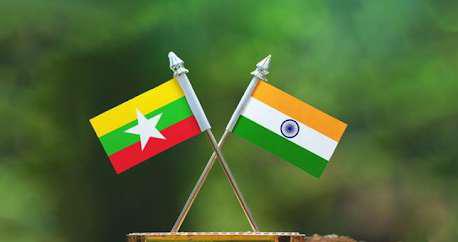
Strategic Cooperation
India’s move to forge close relations with Mynmar are motivated by a desire to counter China’s ‘s growing influence as a regional leader and enhance its own influence and standing. Concerns and tensions increased in India over China’s extensive military involvement in developing ports, naval and intelligence facilities and industries, specifically the upgrading of a naval base in Sittwe, a major seaport located close to Kolkata.
India’s engagement Myanmar’s military junta has helped ease the regime’s international isolation and lessen its reliance on China. In 2013, India provided a loan of about US$500million to Myanmar for its development; India and Myanmar have also agreed to cooperate militarily in order to help modernize Myanmar’s military. In 2020, India gifted the Myanmar its first ever submarine.
But drug trafficking and insurgent groups operating in the border areas remains an immense cause for concern for India.
Security ties: Indian and Myanmar troops carried out jointly Operation Sunrise and Operation Sunrise 2 in 2019 in their respective territories to destroy several insurgent camps. However, the threat to the Kaladan multi-modal transit transport project, India’s gateway to Southeast Asia continues.
India has also supported Myanmar in its efforts to combat Rohingya insurgent groups like the Arakan Rohingya Salvation Army (ARSA) and Aqa Mul Mujahideen (AMM), after Indian intelligence agencies found the ARSA and AMM to have links with terror groups like the Lakshar-e-Taiba (LeT) and Jaish-e-Mohammed (JeM) as well as reported Rohingya terrorists fighting alongside Pakistani extremists in Kashmir.
Complicated Business: A few months ago, an article on Myanmar in The Hindu carried a photo provided by the Kokang online media in which members of an ethnic armed forces group, one of the three militias known as the Three Brotherhood Alliance, posed for a photograph in front of weapons the group allegedly seized from Myanmar’s Army outpost on a hill in Hsenwi township in Shan State, Myanmar, on November 24, 2023[23].
Anybody who follows Myanmar in some detail would know that the country is a large multi-ethnic nation, located in a strategically significant neighbourhood. What’s however less known – but Rajiv Bhatia, the author of the article informs – is that fundamental tragedy lies in the historical reality that neither before nor during British colonial rule did it complete the task of nation-building — the crafting of a unified polity where its Bamar majority and a mixture of ethnic and religious minorities could live peacefully. Decades of military rule complicated the situation and the latest coup compounded it. Three years after an illegal military coup deprived Myanmar of limited democracy, the nation continues to fight its inner demons. Dubbed the ‘sick man of Southeast Asia’, it sees no light at the end of the tunnel as its military regime, the political class, and ethnic organisations persist with the violent conflict. This civil war has little hope of a clear victory for anyone.
So, dealing with Myanmar is complicated business. Since Myanmar is a large multi-ethnic nation, located in a strategically significant neighbourhood, what happens in the country impacts its five neighbours: China, Laos, Thailand, Bangladesh, and India.
Fencing – how effective is it likely to be: India faces the dual problem of drug trafficking and insurgents taking refuge in Myanmar. Less than two months ago in September 2024, the Union government approved ₹31,000 crore to fence the Myanmar border. The 1,643-km Myanmar border runs along the States of Arunachal Pradesh (520 km), Nagaland (215 km), Manipur (398 km) and Mizoram (510 km). Out of the total border length, a 10 km stretch in Moreh, Manipur already been fenced. Two pilot projects of fencing through a Hybrid Surveillance System (HSS) are under execution, the projects will fence a stretch of 1 km each in Arunachal Pradesh and Manipur.[24]
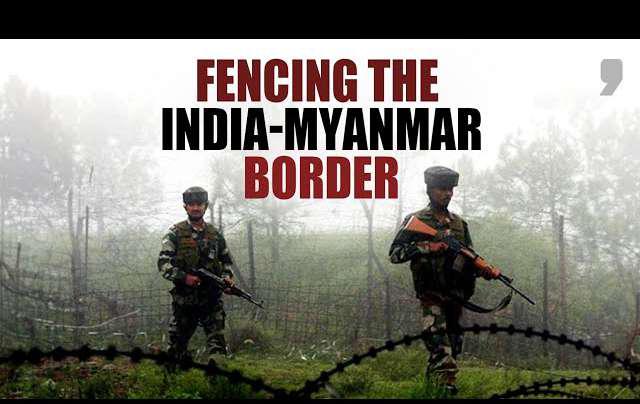
While the feasibility of the project has been widely doubted, the move has attracted adverse comments especially because it impacts upon the Free Movement Regime (FMR) agreement and potentially generates adverse effects on the bilateral ties of the two countries.
The current Free Movement Regime (FMR) agreement with Myanmar is under review as part of this initiative. While the fencing proposal is ostensibly rooted in security concerns, it is anticipated to face opposition and potentially generate adverse effects on the bilateral ties between the two nations. After all, the FMR is a mutually agreed arrangement between the two countries that allows tribes living along the border on either side to travel up to 16 km inside the other country without a visa. It was implemented in 2018 as part of the Indian government’s Act East policy. The rationale of FMR was because the British demarcated the boundary way back in 1826 without considering the opinion of local inhabitants. The demarcation resulted in the division of people who share strong ethnic and familial bonds across the border. In addition to fostering people-to-people interactions, the Free Movement Regime (FMR) was envisioned to boost local trade and business activities. The area has a rich tradition of cross-border commerce facilitated by customs and border haats.
Bhutan
Two countries that enjoy the closest bilateral relations are India and Bhutan; historically bound by the Treaty of Perpetual Peace and Friendship 1949 / 2007. Common security is the foundational principle of the treaty. India and Bhutan are also two countries with which China has not resolved its border.
Special characteristics of the relationship include open borders, visa-free travel, and duty-free trade. India has been Bhutan’s major economic and development cooperation partner.
1949 & 2007 Treaty: The 1949 Treaty is a virtual reproduction of the British era Treaty of Punakha Dzong of 1910. Article 2 of 1949 treaty states that India will not interfere in the internal affairs of Bhutan. In turn, the government of Bhutan will be guided by the advice of India with reference to external relations.
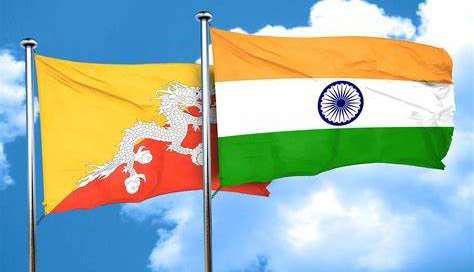
The 2007 Treaty amended Article 2 to read as follows: “In keeping with the abiding ties of close friendship and cooperation between Bhutan and India, the Government of the Kingdom of Bhutan and the Government of the Republic of India shall cooperate closely with each other on issues relating to their national interests. Neither Government shall allow the use of its territory for activities harmful to the national security and interest of the other.”
Compromising Bhutanese territory and security has direct implication for India as India can be attacked by China by encroaching on Bhutanese territory. That’s why both Bhutan and India cooperated on Doklam in 2017 to stop the road construction by China by invoking Article 2. In this context it may not be out of place to state that all the officers of Royal Bhutan Army and Royal Bhutan Guards are trained in National Defence Academy and in Indian Military Academy in India. And all their JCOs and men are trained at the Indian Military Training team at Ha in western Bhutan.
On June 15-16, 2014, Bhutan was the first country that Modi visited as prime minister. He inaugurated the Supreme Court building and also laid the foundation of the joint venture 600 megawatt Kholongchu hydroelectric project with an estimated cost of `400 million. When in June 2017 China entered Bhutanese territory to construct a road in the Doklam plateau, Thimpu raised objections and requested India to intervene leading to a standoff between India and China.
Diversifying economic heft: Indo-Bhutan Hydropower Cooperation is more than five decades old. From Hydropower, collaboration has extended to four other areas: mining, tourism, agriculture, and remittance. Modi’s second visit from 17-18 August 2019 resulted in the launch of Mangdechhu Hydroelectric Plant, the ‘RuPay’ card, Ground Station for the South Asian Satellite (SAS), and Inter-connection between Indian National Knowledge Network (NKN) and DrukREN.[25]
A closer look at China factor: There’s no denying that the roots of 1949/2007 Treaty lie in the China factor. But then this makes it necessary for us to understand the evolving relationship between Bhutan and China.
According to a PTI report datelined 25 October 2023[26], during the recent visit of Bhutan’s Foreign Minster Dr Tandi Dorji to China, the two countries signed a “Cooperation Agreement” outlining the responsibilities and functions of the Joint Technical Team (JTT) on the delimitation and demarcation of the boundary between the two countries after their 25th round of border talks. Dorji’s October 2023 visit to Beijing came in the backdrop of remarks by Bhutanese Prime Minister Dr. Lotay Tshering to Belgian newspaper La Libre in March that year that Bhutan hoped to complete the demarcation of territories with China within one or two meetings: “We do not encounter major border problems with China, but certain territories are not yet demarcated. We still have to discuss it and draw a line.” This was in spite of Doklam standoff of 2017 and the more recent Chinese claim on Sakteng Wildlife Sanctuary in Bhutan at the Global Environment Facility (GEF) Council by opposing funding for the project. Bhutan had then lodged a demarche to the Chinese Embassy in India over China’s claim over the sanctuary made at the GEF meeting.
As Tshering’s remarks raised concerns in India considering the close ties, Bhutan King Jigme Khesar Namgyel Wangchuck visited New Delhi in April and met Prime Minister Narendra Modi during which the two leaders resolved to expand the close ties between the countries.
Returning to the October 2023 meeting, China urged Bhutan to establish diplomatic ties with China as they have long maintained friendly exchanges. “China always respects Bhutan’s independence, sovereignty and territorial integrity, and is willing to strengthen exchanges at all levels and in all fields, expand practical cooperation on the economy, trade, culture and tourism, and accelerate the boundary demarcation process and the establishment of diplomatic relations with Bhutan to bring more benefits to the two countries and the two peoples”.
Interestingly, the Chinese Foreign Ministry press release quoted Dorji as saying that Bhutan firmly abides by the one-China principle meaning Taiwan and Tibet are part of China and stands ready to work with China for an early settlement of the boundary issue and advance the political process of establishing diplomatic relations. The Chinese press release also said Dorji expressed Thimphu’s backing for President Xi Jinping’s Global Security Initiative (GSI), the Global Development Initiative (GDI) and the Global Cultural Initiative (GCI) to further Beijing’s strategic initiatives.
Even if we disregard the press statements of the Chinese, reality is that China and Bhutan have engaged in direct talks since 1984 to settle their border dispute. In 1996, Beijing put forward a package deal under which it offered to accept Bhutan’s sovereignty over Pasamlung and Jakarlung in north-central Bhutan in exchange for Thimphu ceding control over Doklam in western Bhutan to China.[27]
Marcus Andreopoulos explains Chinese intent and action quite well – something that must be obvious to India’s foreign policy and military strategists. He says that after years of so-called salami slicing along their shared border, China is attempting to engage in negotiations with Bhutan to formalize its ill-gotten gains—a strategy reminiscent of China’s playbook along its border with India and in the South China Sea. What is different is the strategic importance of Bhutan’s disputed regions to the China-India relationship.[28]
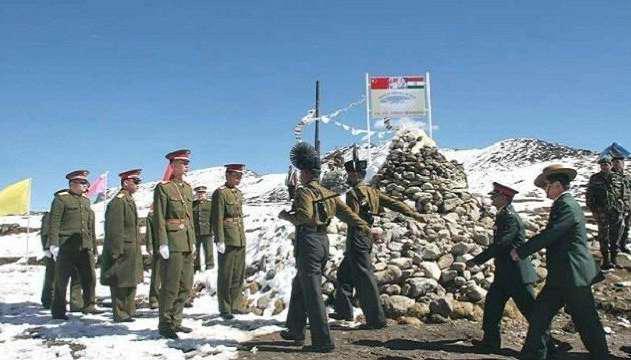
Andreopoulos points out that Chinese control of the disputed Doklam plateau would allow Beijing unhindered mobilization and more access routes in the event of military conflict with New Delhi. As a result, any China-Bhutan talks are not just a bilateral issue, but rather part of a Chinese strategy to gain a crucial advantage over India. A resolution between the CCP and the government of Bhutan would reverberate throughout India, threatening peace in the region and escalating the crisis along the Sino-Indian border. The implication is that this issue requires close attention from New Delhi as well as the Quadrilateral Security Dialogue—the Indo-Pacific partnership that includes Australia, India, Japan, and the United States.
For Beijing, Doklam remains the goal: It sits at a junction that connects Tibet, Bhutan, and India, and it would provide the Chinese People’s Liberation Army with a tactical advantage. Bhutan’s unwavering refusal to accept the deal may have prompted China to add the Sakteng claim, sending a message about how far it will go. Meanwhile, China has stepped up its coercive measures and opted for more creative means of reaching a breakthrough. China erected entire villages inside Bhutan’s borders in recent years; Gyalaphug village in the northern Beyul region is one of three the Chinese have constructed, along with miles of roads, CCP administrative centers, and outposts for military, police, and other security officers.
Andreopoulos explains such an elaborate construction drive may seem to contradict China’s apparent preference for the western regions, including its offer to exchange the very land on which it has built villages. But this view misunderstands the CCP’s motive: Rather than annexing Bhutanese territory to occupy it fully, the CCP’s main objective seems to be to strike at the core of Bhutan’s Buddhist culture. Quoting an expert, Andreopoulos says that Bhutan ceding the Beyul region—an area of immense cultural and religious importance—is as likely as Britain giving up Stonehenge. The silent occupation is instead intended to force the hand of the Bhutanese leadership, making it more eager to discuss the future of Doklam.
Similarly, the Chumbi Valley to the north of Doklam—often described as a Chinese dagger into Indian territory—represents a weakness for China, which sees the ancient gateway to Tibet as vulnerable to a pincer movement in which Indian troops could strike from both sides of the valley at once—from Bhutan and India. By extending its claim by 89 sq km south of the intersection with Bhutan and India, China hopes to gain a vantage point that could serve both offensive and defensive purposes in a potential conflict with India.
India is aware that if China has Doklam under its control, it could exert more pressure on India; Chinese forces could easily sever India’s connection to the eastern part of their disputed border. Such a resolution would also almost certainly precede more ambitious moves from China in Arunachal Pradesh, which could draw in the United States.
In this context it may not be unrealistic to surmise that India will push for Quad to bring military cooperation within its framework. With such high stakes, New Delhi should urge Thimphu to maintain the status quo in Doklam in the face of continued pressure from Beijing.
Without going that far, Professor Srikanth Kondapalli of JNU explains China’s strategy. According to him, to exert further pressure on Bhutan, China began constructing “well-off society” villages at Gyalaphug (in Doklam Plateau in 2015) and several other places claimed by Bhutan. Further, in June 2020, China began constructing “well-off society” villages at Gyalaphug (in Doklam Plateau in 2015) and several other places claimed by Bhutan. Further, in June 2020, China began claiming 650 sq km of the Sakteng Wildlife Sanctuary in Bhutan’s eastern district of Trashigang. Thimphu suspects that through these China’s military will make inroads into Bhutan and send Chinese migrants for regional domination efforts.[29]
Another stealthy effort of China is in the economic field. India used to be Bhutan’s biggest trading partner as well as aid provider. However, in the last few years, China displaced India and now accounts for more than a quarter of Bhutan’s trade. (As we will see in the next section, it is in this context that India doubled its assistance to Bhutan to regain the number one spot)
Kondapalli further explains that to extend China’s influence, it is necessary for China to invest in physical connectivity projects such as roads, railways, hydro-electricity and other projects. The Power Construction Corporation of China is involved in the Chukha hydropower project and the Punatshangchu Hydropower Project. Sinohydro Corporation, China Gezhouba Group, China Road and Bridge Corporation and other Chinese State-owned companies are involved in several infrastructure projects in Bhutan, while China Railway Eryuan Engineering Group Co is exploring railway connectivity through the Lhasa-Gyantse link. Chinese Party-State companies also built the 220-km Friendship Highway in 2008, 290-km Lateral Road in 2013, 100-km Gelephu-Gomtu Road in 2016, 60-km Wangdue-Trongsa Road in 2017, in addition to mining copper and gold.[30]
Additionally, China dominates the crucial telecom sector in Bhutan laying down fibre optic cables, expanding mobile networks, and establishing internet access points. Huawei is involved in Bhutan since 2009 in 3G and 4G telecom networks. Prior to the pandemic, China sent over 80,000 tourists to Bhutan, but the latter is aware that China could weaponise tourism, as it did against South Korea, Malaysia and Taiwan. China is thus exerting tremendous pressure on Bhutan to establish diplomatic relations. Territorial dispute resolution is a step in that direction, though China’s overbearing conduct towards Thimphu and New Delhi could stall that process for the time being. China’s territorial concessions to Bhutan are nominal and tactical in the central sector while the gains it seeks in the western sector are substantial and strategic in nature, aimed at countering and weakening India.
India’s response: Perhaps then it was natural that during Prime Minister Narendra Modi’s third visit to Bhutan on March 22 and 23 this year, India announced the doubling of its assistance to Bhutan from 50 billion Indian rupees ($0.6 billion) for its 12th Five Year Plan (2018-2023) to 100 billion rupees ($1.2 billion) for its 13th Five-Year Plan (2024-2029). The Gelephu Special Administrative Region, an economic hub that will come up on Bhutan’s border with Assam in India’s Northeast, and connect with an economic corridor linking South Asia to Southeast Asia, is expected to be a major beneficiary of India’s substantially enhanced assistance to Bhutan.[31]
Further, the two sides also signed a Memorandums of Understanding and agreements on energy, trade, digital connectivity, space, agriculture, youth exchange, environment and forestry. The text of an MoU on establishing two railway lines — Kokrajhar-Gelpehu and Banarhat-Samtse — between India and Bhutan was initialed. India also promised to build an airport and waterways navigation on the River Brahmaputra as well as integrated check posts to strengthen connectivity and trade infrastructure between the two countries.
As we write this, Bhutan Prime Minister Tshering Tobgay has just attended the first “Global Conference of the International Co-operative Alliance (ICA)” in New Delhi on November 25, 2024. Pitching the upcoming Gelephu Mindfulness City as the biggest “co-operative project” in Bhutan, Bhutanese Prime Minister Tshering Tobgay said that he was grateful for India’s support on the 2,500 square kilometre “Zero Carbon” city being developed.[32]
But a more ominous development has come to the fore. On December 18, even as NSA Ajit Doval’s was meeting China’s foreign minister on the India-China boundary issue in Beijing, there was report of China building 22 villages in Bhutan, including 8 near Doklam, and in the process takes 2% of Bhutan’s territory.[33]
Robert Barnett, a research associate at the School of Oriental and African Studies (SOAS) who authored Forceful Diplomacy: China’s Cross-Border Villages in Bhutan, the key concern for India in these developments revolves around the Doklam issue.[34] Bhutan, which is obligated by treaty to uphold India’s security interests, has asserted that resolving the Doklam issue would require a trilateral approach rather than a decision made solely by Bhutan. As a result, any resolution on Doklam is unlikely to exclude India’s involvement, according to Barnett.
Barnett expressed a larger concern, pointing out that, in the long term, the key issue is whether China’s use of intense pressure—essentially force—might succeed in pulling Bhutan out of India’s sphere of influence and aligning it with Beijing. He observed that Bhutan seems to have already surrendered substantial territory to China, a development India was unable to stop.
Similarly, Ashok Kantha, who served as India’s envoy to Beijing from 2014 to 2016 and is an honorary fellow at the Institute of Chinese Studies, holds that China’s construction of villages within Bhutanese territory breaches the 1998 agreement between the two nations on maintaining peace and tranquility in border areas. According to him, these developments are part of China’s strategy of “incrementally and systematically changing facts on the ground”. He has likened this approach to China’s activities in the South China Sea, where artificial features were created and militarised. According to him, while these actions are particularly concerning for India as they occur in a sensitive region near the Siliguri Corridor “Bhutan is unable to challenge these actions due to the significant power imbalance and this reflects China’s typical behaviour of asserting its claims, disregarding prior commitments and the perspectives of other countries, and facing no real consequences.”[35]
We close this section on India-Bhutan relations with the uncomfortable but realpolitik acknowledgment that while Bhutan will remain close to India, it has little wherewithal to escape the relentless pressure of the Chinese dragon – and that will impact on India’s security concerns.
Nepal
Few countries have more intimate relations than Nepal with India as they share an open border that allows their nationals to move freely. Their relationship is characterised by close economic, security and cultural ties. India remains a major trade and transit partner, where a number of Nepalis continue to earn a living or pursue higher education. Good ties with Nepal, meanwhile, help India address security and geopolitical issues in its neighbourhood more smoothly. Yet, their political relationship, in the near past, has gone through more ebbs than flows, largely due to a border dispute over the Kalapani area.
If we are to focus on the developments over the last decade, then the first thing to observe is the revision of the 1950 treaty. After years of dissatisfaction by the Nepalese government, India in 2014, agreed to revise and adjust the treaty to reflect the current realities, however, the modality of adjustment hasn’t been made clear by either side. Due to geographical proximity, socio-cultural affinity and economic dependence of Nepal, India has strong influence on Nepal and its policy decisions.
Modi’s first visit to Nepal in August 2014 as part of his ‘neighbourhood first’ policy was highly successful. He was the first foreign leader to address the Constituent Assembly — the body tasked with drafting Nepal’s new constitution. His remarks drew widespread praise from all Nepalese political parties and seemed to promise a new beginning in India–Nepal relations. Minister Narendra Modi had expressed its displeasure at Nepal’s constitution, a position made clear in a series of statements issued by Ministry of External Affairs (MEA) in New Delhi. Citing MEA sources, Indian Express even circulated a seven-point demand for amendments to the constitution, within days of its promulgation. With the election of nationalistic leader K P Oli as prime minister in Nepal, the rift between Delhi and Kathmandu was widened, and lead to a massive humanitarian crisis, as shortages of fuel, medicines, and essential supplies become acute across Nepal.
The Blockade: According to Wikipedia, the 2015 India Blockade of Nepal, which began on 23 September 2015 and lasted about six months, was an economic and humanitarian crisis that severely affected Nepal and its economy. Just as an illustration, roughly 300 fuel trucks enter from India on a normal day, but this dwindled to a sporadic passage of 5–10 fuel trucks daily during the crisis, though shipments of perishables like fruits and vegetables had generally been allowed to pass. Moreover, India had also been stopping some Nepalese trucks at the Kolkata harbour. The blockade choked imports of not only petroleum, but also medicines and earthquake relief material.
Nepal accused India of imposing an undeclared blockade. It is generally accepted that the blockade was triggered by Indian concern about changes to the Nepali constitution, violent ethnic conflict, and Nepal’s increasing cooperation with China. India denied the allegations, stating the blockages were imposed by Madheshi protesters within Nepal.
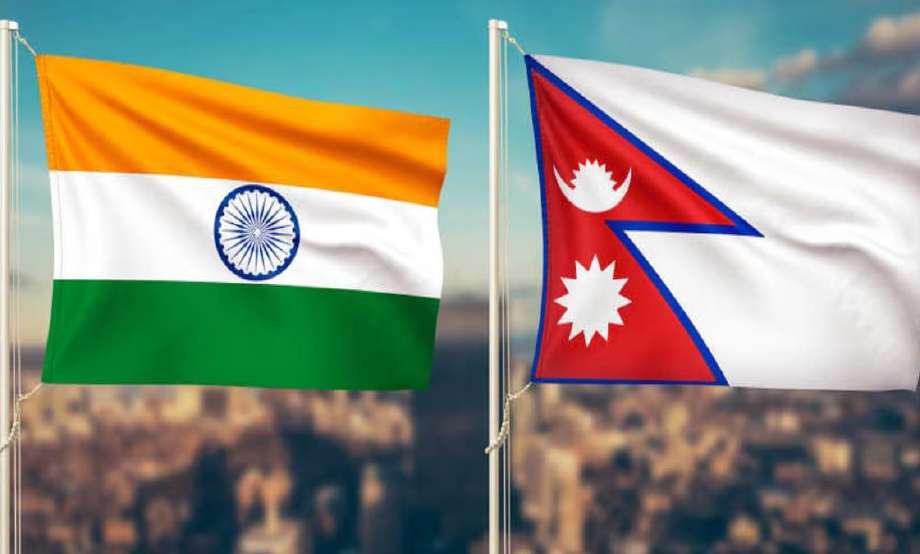
But the blockade was perhaps more harmful for Indian interests. In “Is This the End of India’s Influence Over Nepal?”, Biswas Baral, the editor of The Annapurna Express states that the 2015-16 blockade imposed by India “[T]he main catalyst for the end of the era of “special relations” between India and Nepal, and there is now little doubt that India has lost strategic space to China in Nepal”[36].
Focus on HIT: During his Nepal visit in August 2014, Prime Minister Modi had invoked ‘neighborhood first’ to denote a new beginning in relations. To highlight the focus on connectivity, he coined the acronym HIT, covering Highways, Infoways, and Transways. However, relations took a downturn in 2015 with the economic blockade. Repairing the relationship has been a slow process but results are now visible, leading PM Modi to recall and revive the old acronym.
A change of government in Nepal with the fall of the hawkish regime led by Khadga Prasad Sharma Oli and the restoration of the pre-2022 election Nepali Congress and Maoist alliance to power raised expectations of a thaw in this matter. With Pushpa Kamal Dahal as the new Prime Minister, the border irritant in ties was not delved upon. According to The Hindu editorial on India-Nepal ties[37], the focus was on trade and development ties during the Nepali PM’s four-day visit in early June 2023. Economic ties received a fillip with progress in expanding cooperation in power sector development and trade. The finalisation of an agreement to increase the export of power from Nepal to India to 10,000 MW within 10 years, development of new transmission lines, an MoU for the construction of a petroleum supply pipeline between Siliguri and Jhapa, besides extensions to existing pipelines and construction of new terminals were positives. But the highlight of Mr. Dahal’s visit was an agreement to take forward the Indian proposal of the export of Nepal’s hydropower to Bangladesh through Indian territory.
The Hindu editorial rightly pointed out that the success of Mr. Dahal’s visit would be assessed when these agreements come to fruition, but the progress made in recent Indian ventures such as in rail connectivity and hydroelectric projects should be encouraging. New Delhi’s emphasis on expanding ties by taking a focused approach on development projects contrasts well with the high sounding but less viable Chinese forays into infrastructure projects in Nepal. Besides, it has suited the Indian government to take a less intrusive approach to the complicated internal political dynamics of Nepal in recent years, especially after the perceptions of Indian interference in the Madhesi agitations of the last decade, led to hyper-nationalists fanning anti-India rhetoric. While the emphasis on economic ties should keep the relationship in good stead, the governments cannot just put the border issue on the back burner and expect it to be sorted out.
Three Irritants: According to Rakesh Sood, former Indian Ambassador to Nepal, there are three irritants in India-Nepal relations. The first is the Agnipath scheme that impacts the recruitment of Gurkha soldiers into the Indian Army’s Gurkha regiments, a practice that began in 1816 by the British Indian army. This was continued under a 1947 treaty based on ‘equal treatment’. The Agnipath revision of the terms has not gone down well with Nepal which now refuses its citizens to join the Indian Army under this scheme.
The second is Kalapani boundary issue that was deliberately stoked as a nationalist cause by Mr. Oli in 2020 when his position as Prime Minister was under threat. He pushed through a constitutional amendment and unilaterally changed Nepal’s map. According to Sood, resolving this will need time because a lasting solution will need political wisdom and understanding. But Sood does not mention that the “unprecedented defiance” by Nepal was triggered by India organising a road inauguration ceremony in Kalapani, a disputed region between Nepal and India, “giving a massive setback to the Modi government”.[38]
The last is the legacy issue – the !950 Treaty of Peace and Friendship. In Nepal, a conviction has taken root that the Treaty is unfair to Nepal as it was imposed somehow. But Ambassador Sood clarifies that this ignores the reality that in 1949, the Nepali regime was perturbed by the Maoist revolution in China and the subsequent takeover of Tibet. It sought an understanding with India and the 1950 Treaty, in large measure, reflects the provisions of the 1923 Treaty between Nepal and British India. In fact, the Treaty enables Nepali nationals ‘equal treatment’ in terms of employment and permits them to apply for any government job, except for the Indian Foreign Service, Indian Administrative Service and the Indian Police Service. Nepali nationals work in the Indian private and public sector, have joined the revenue services and in the Army, have risen to become two-star generals.[39]
People light candles on an outline of the new map of Nepal drawn on a road as they celebrate the approval of the political map to include territory claimed by both India and Nepal, in Kathmandu, Nepal, June 13, 2020.
Waiting in limbo: After being sworn in as Prime Minister of Nepal for the fourth time in July this year, K. P. Sharma Oli had met Prime Minister Narendra Modi on the sidelines of a United Nations conference in September, while Nepal Foreign Minister Arzu Rana Deuba had visited New Delhi for talks with External Affairs Minister S. Jaishankar in August. Although Oli had expressed his desire to visit India, no such invite came his way. With no invite from India, Nepal PM Oli headed to China on first visit abroad – making him the first Nepali leader not to visit India on his first bilateral visit abroad after taking over. Suhasini Haidar termed the silence on New Delhi’s part and Oli’s subsequent visit to China as a symptom of strained ties over issues such as denial of overflight rights and New Delhi’s objection to Chinese investment or components in India-Nepal projects.[40]
The emergent uncertainty raises the question as to what sort of government in Nepal should India support. Writing almost four years ago for ThePrint, Shyam Saran, former Foreign Secretary and India’s Ambassador to Nepal had cautioned:
“There is a fond belief in some quarters that a Right-wing coalition in Nepal, perhaps with the return of the monarchy and a Hindu kingdom label, will safeguard Indian interests and keep the Chinese at bay. One sees repeated assertions of this kind. A careful reading of history will show that it is the Hindu ‘samraats’ who have led the way to promoting anti-Indian sentiment. They have served as dependable sentinels of Chinese interests in Nepal. The Chinese never supported the Maoists against the monarchy. They built their relations with the Maoists only after it became clear in 2006 that the monarchy was irretrievable.
No matter which political dispensation is in power in Nepal, no matter what its label, as long as China has powerful instruments of security and economic leverage, it will use them. It has worked with a Hindu Nepal before and will do so again. Let us not fall naively into a trap.
(Further) the political empowerment of the Madhesis who inhabit the Nepali terai adjacent to the Indian plains through a democratic dispensation is important to India because any unrest there will spill over into our country. We have witnessed this before. In acquiescing to a tactical move that may be a setback to China, let us not sacrifice the interests of people whose well-being also safeguards the security interests of India.
India should meet the China challenge in Nepal by drawing upon the considerable assets it has in its relations with that country, assets which China is unable to replicate. It is by positioning itself as a partner of choice for the economic and social development of Nepal that India can retain its considerable presence there. A Nepal that gets caught up in great power confrontation is not in India’s interest and we should not encourage this for ephemeral short-term gains.”[41]
Concluding Remarks
Most think tanks and seasoned observers of India’s relations with its neighbours had held that after a promising start had nosedived significantly over the last ten years. Our detailed treatment with respect to our relationship with neighbours largely underscored the opinion of experts.
But it is good to cull out the critical aspects. First, when populist leaders stoke sectarian or chauvinistic issues in the garb of nationalism and security for vote bank politics targeted for their domestic constituency, the negative impact on bilateral relations can be severe. Developments in Maldives, India, Pakistan, Nepal, and Bangladesh are ample proof. In other words, the elites’ route to capture and retain power often comes in the way of building sound bilateral relations.
Second, it needs great skill and statecraft to shed the negative baggage of above and build bilateral relations. Muizzu and Dissanayake are two different but apt practitioners of this art; while Oli of Nepal isn’t.
Third, even if the political leader has shown the necessary adroitness and skills of the trapeze artist, it may still not compensate for the anger and sense of alienation that citizens of the receiving country may exhibit. It’ll take Maldives a long time to see the same level of tourist influx from India, or for wounds of Bangladeshis to heal for being called termites.
Fourth, the China factor is now overwhelming and is bound to cast its long shadow on our relations with neighbours. This means at least four things. One, it is not just that China’s resources are so much more than India’s. China has demonstrated to the world that India has to stand down for China to be seen as the unquestioned emerging superpower. Two, our “little” neighbours now have a choice; so, gone are the days when India could play the “big” brother role; now it’ll be seen more as intervention. Three – and almost as a corollary – smaller neighbours may be inclined to play China-India card to gain concessions. So, taken together, a question may arise for India: why not collaborate rather than compete with China?
Fifth, it’s time not only to revive SAARC but for India to take active role in this direction. There has been a host of advice from saner and well established quarters of late; it will serve the foreign policy mandarins to heed these and inform their political masters. On balance, there’ll be nothing to lose and everything to gain.
In our opinion, this “panchmukhi” could just be the framework to revive our relationship with our neighbours.
[1] Meera Srinivasan, “View From India: Neighbours watch as India’s coalition government takes charge”, The Hindu, Jun 10, 2024 https://mail.google.com/mail/u/0/?tab=rm&ogbl#inbox/FMfcgzQVwxBpbKLGVMNQDRQGVkZthGbd
[2] https://www.hcicolombo.gov.in/page/india-sri-lanka-bilateral-relations/
[3] “Sri Lanka Clarifies Position on ETCA and Strengthened Ties with India During President’s State Visit”, Lanka News Web, 21 December 2024
[4] Rathindra Kuruvita, “Sri Lankan President’s India Visit Energizes Relations”, The Diplomat, December 18, 2024 https://thediplomat.com/2024/12/sri-lankan-presidents-india-visit-energizes-relations/
[5] https://economictimes.indiatimes.com/news/international/world-news/sri-lankan-pm-says-direct-private-investment-from-china-welcome/articleshow/109823728.cms?from=mdr
[6] Shashank Mattoo, “What China’s $4.5-bn investment in Sri Lanka means for India”, Mint, 28 Nov 2023 https://www.livemint.com/politics/mint-explainer-what-china-s-4-5-bn-investment-in-sri-lanka-means-for-india-11701174560222.html#:~:text=Sri%20Lanka%20has%20paved%20the,in%20New%20Delhi’s%20strategic%20backyard.
[7] https://asia.nikkei.com/Spotlight/Asia-Insight/Sri-Lanka-s-China-debt-trap-fears-grow-as-Beijing-keeps-investing
[8] Ritu Sharma, “Right Next To China — India To Invest In Deep Water Port In Philippines After Iran, Sri Lanka, Myanmar & Oman”, The EurAsian Times, May 8, 2024 https://www.eurasiantimes.com/right-under-chinas-nose-india-to-invest/
[9] ANI Dec 16, 2024, https://economictimes.indiatimes.com/news/defence/india-and-sri-lanka-to-finalise-defence-cooperation-agreement-strengthen-security-ties-pm-modi/articleshow/116363896.cms?from=mdr
[10] Anirban Bhaumik, “Modi, Dissanayake agree to speed up security cooperation agreement; India to provide defence platforms, assets to Sri Lanka”, Deccan Herald, 16 December 2024 https://www.deccanherald.com/india/modi-dissanayake-agree-to-speed-up-security-cooperation-agreement-india-to-provide-defence-platforms-assets-to-sri-lanka-3319390
[11] Kamakshi Wason, “Sri Lanka’s election: Test for regional dynamics”, Hindustan Times, Sep 21, 2024 https://www.hindustantimes.com/ht-insight/international-affairs/sri-lankas-election-test-for-regional-dynamics-101726898873334.html
[12] ‘Helped us immensely’: Sri Lankan President Dissanayake thanks India for $5 billion economic support, HT News Desk, Dec 16, 2024 https://www.hindustantimes.com/india-news/helped-us-immensely-sri-lankan-president-dissanayake-thanks-india-for-5-billion-economic-support-101734340552475.html
[13] Ibid
[14] ibid
[15] “Sri Lanka Clarifies Position on ETCA and Strengthened Ties with India During President’s State Visit”, Lanka News Web, 21 December 2024
[16] “Sri Lanka Denies Agreement on Indo-Lanka Oil Pipeline”, Lanka News Web (LNW), December 21, 2024 https://lankanewsweb.net/archives/67315/sri-lanka-denies-agreement-on-indo-lanka-oil-pipeline/
[17] Anirban Bhaumik, “Sri Lanka opposes India’s bid to explore cobalt from an undersea mountain in Indian Ocean”, Deccan Herald, 10 July 2024 https://www.deccanherald.com/world/sri-lanka-blocks-indias-bid-to-explore-cobalt-from-an-undersea-mountain-in-indian-ocean-3100636
[18] J Venkatesan, “Kachchatheevu was not ceded to Sri Lanka, Centre tells court”, The Hindu, August 31, 2013 https://www.thehindu.com/news/national/kachchatheevu-was-not-ceded-to-sri-lanka-centre-tells-court/article5076961.ece
[19] Meera Srinivasan, “Why are Katchatheevu pacts being questioned”, The Hindu, April 13, 2024 https://www.thehindu.com/news/international/why-are-katchatheevu-pacts-being-questioned-explained/article68037230.ece
[20] Meera Srinivasan, “Sri Lankan media hit out at Modi’s Katchatheevu remarks”, The Hindu, April 04, 2024 https://www.thehindu.com/news/international/sri-lankan-media-hit-out-at-modis-katchatheevu-remarks/article68020552.ece
[21] Op. cit
[22]https://en.wikipedia.org/wiki/India%E2%80%93Myanmar_relations#:~:text=Myanmar%20is%20important%20for%20India,Friendship%20was%20signed%20in%201951..
[23] Rajiv Bhatia, “Finding light in Myanmar’s darkness”, The Hindu, February 01, 2024 https://www.thehindu.com/opinion/op-ed/finding-light-in-myanmars-darkness/article67796493.ece
[24] “Government sanctions ₹31,000 crore to fence Myanmar border”,, The Hindu, 18 November 2024 https://www.thehindu.com/news/national/government-sanctions-31000-crore-to-fence-myanmar-border/article68655939.ece
[25] https://www.mfa.gov.bt/state-visit-to-bhutan-by-h-e-shri-narendra-modi-prime-minister-of-india-from-17-18-august-2019/
[26] “China, Bhutan hold border talks, ink pact on functions of JTT for delimitation, demarcation of boundary”, PTI, 25 October 2023 https://www.deccanherald.com/world/china-bhutan-hold-border-talks-ink-pact-on-functions-of-jtt-for-delimitation-demarcation-of-boundary-2740047
[27] Sudha Ramachandran, “Modi’s Visit to Bhutan Amid Elections in India Raises Questions”, The Diplomat, 2 April 2024 https://thediplomat.com/2024/04/modis-visit-to-bhutan-amid-elections-in-india-raises-questions/
[28] Marcus Andreopoulos, “China’s Border Talks With Bhutan Are Aimed at India”, Foreign Policy, July 18,2023 https://foreignpolicy.com/2023/07/18/china-bhutan-border-talks-india-dispute-security/
[29] Srikanth Kondapalli, “Bhutan under China’s shadow”, Deccan Herald, 03 December 2023
https://www.deccanherald.com/opinion/bhutan-under-chinas-shadow-2794475
[30] ibid
[31] Sudha Ramachandran, op. cit.
[32] Suhasini Haidar and Vijaita Singh, “As India inaugurates global co-operatives alliance, Bhutan pitches Gelephu as biggest co-operative project”, The Hindu, November 25, 2024 https://www.thehindu.com/news/national/as-india-inaugurates-global-co-operatives-alliance-bhutan-pitches-gelephu-as-biggest-co-operative-project/article68911123.ece
[33] Bhaswar Kumar, “China in Doklam: Beijing builds 22 villages, takes 2% of Bhutan’s territory”, Business Standard, Dec 18, 2024 https://www.business-standard.com/external-affairs-defence-security/news/china-in-doklam-beijing-builds-22-villages-takes-2-of-bhutan-s-territory-124121800557_1.html
[34] ibid
[35] ibid
[36] Biswas Baral, “Is This the End of India’s Influence Over Nepal?” The Diplomat, March 14, 2018 https://thediplomat.com/2018/03/is-this-the-end-of-nepals-special-relationship-with-india/
[37] https://www.thehindu.com/opinion/editorial/economic-emphasis-the-hindu-editorial-on-india-nepal-ties/article66946828.ece
[38] “Is India’s ‘neighbourhood first policy’ unable to win regional allies?”, Proceedings of intern
ational webinar “Failure of India’s Neighborhood First Policy under BJP Government: Implications for Regional Cooperation”. https://www.trtworld.com/magazine/is-india-s-neighbourhood-first-policy-unable-to-win-regional-allies-50492
[39] Rakesh Sood, “More HIT Than Miss in India-Nepal Ties”, 22 Jun 2023, Asia Pacific Leadership Network https://www.apln.network/news/member_activities/more-hit-than-miss-in-india-nepal-ties
[40] Suhasini Haidar, “No invite from India, Nepal PM Oli heads to China on first visit abroad”, The Hindu, November 14, 2024 https://www.thehindu.com/news/international/no-invitation-from-india-new-nepal-pm-oli-heads-to-china-for-bilateral-visit/article68859901.ece#cxrecs_s
[41] Shyam Saran, “A stable Nepal is in India’s interest. Supporting Oli or hoping for Right-wing coalition isn’t”, ThePrint, 30 December, 2020 https://theprint.in/opinion/a-stable-nepal-is-in-indian-interest/576092/

